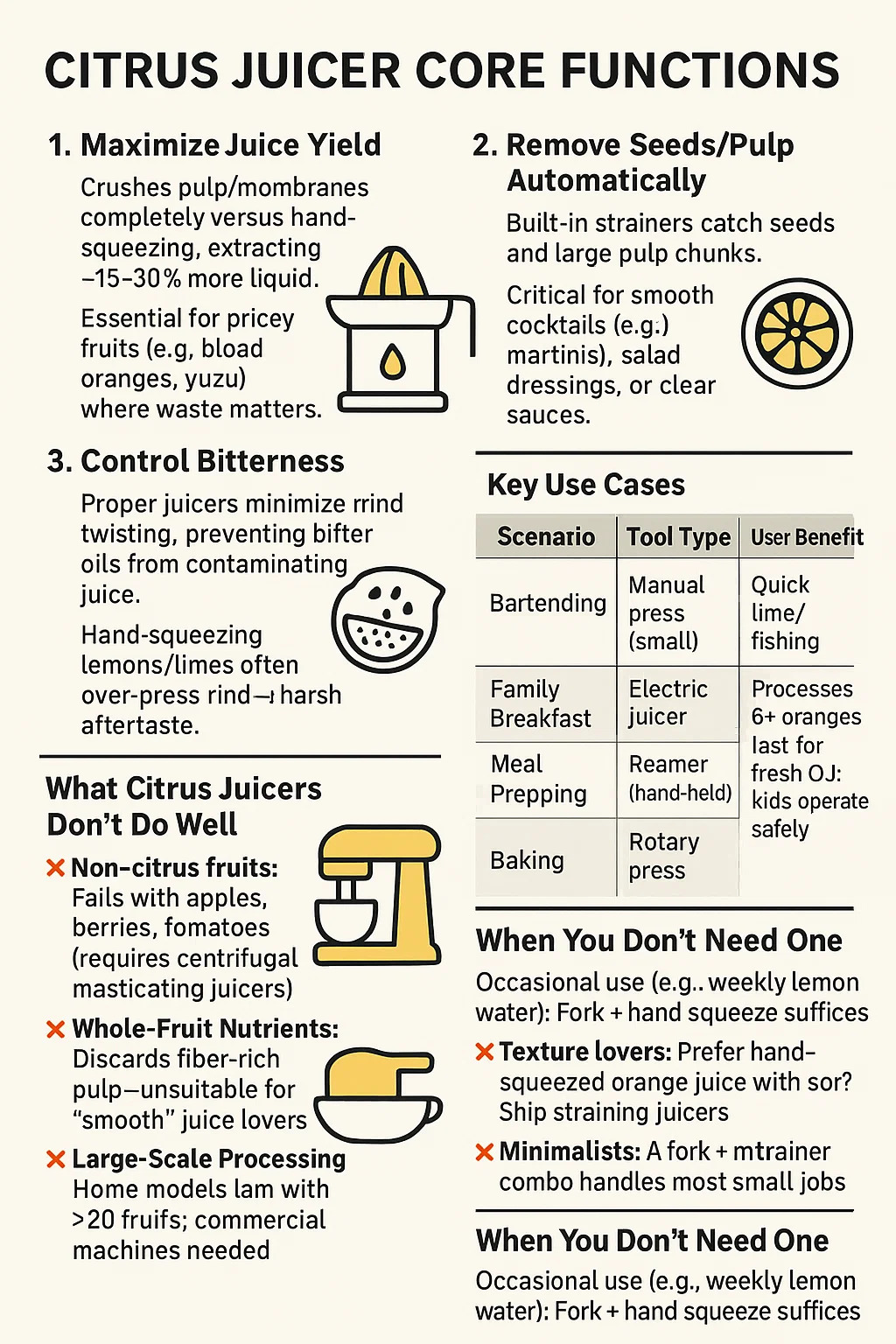Citrus Juicer Core Functions
1.Maximize Juice Yield
Crushes pulp/membranes completely versus hand-squeezing, extracting ~15-30% more liquid.
Essential for pricey fruits (e.g., blood oranges, yuzu) where waste matters.
2.Remove Seeds/Pulp Automatically
Built-in strainers catch seeds and large pulp chunks.
Critical for smooth cocktails (e.g., martinis), salad dressings, or clear sauces.
3.Control Bitterness
Proper juicers minimize rind twisting, preventing bitter oils from contaminating juice.
Hand-squeezing lemons/limes often over-press rind → harsh aftertaste.
Key Use Cases
| Scenario | Tool Type | User Benefit |
| Bartending | Manual press (small) | Quick lime/lemon juice for 10+ drinks without seed fishing. |
| Family Breakfast | Electric juicer | Processes 6+ oranges fast for fresh OJ; kids operate safely. |
| Meal Prepping | Reamer (hand-held) | Juices batches of lemons for dressings/marinades; stores juice in jars. |
| Baking | Rotary press | Zest-free lemon juice for delicate desserts (cheesecake, curd). |
What Citrus Juicers Don't Do Well
Non-citrus fruits: Fails with apples, berries, tomatoes (requires centrifugal/masticating juicers).
Whole-Fruit Nutrients: Discards fiber-rich pulp—unsuitable for "smooth" juice lovers.
Large-Scale Processing: Home models jam with >20 fruits; commercial machines needed.
When You Don't Need One
Occasional use (e.g., weekly lemon water): Fork + hand squeeze suffices.
Texture lovers: Prefer hand-squeezed orange juice with pulp? Skip straining juicers.
Minimalists: A fork + mesh strainer combo handles most small jobs.



 英语
英语 中文简体
中文简体














